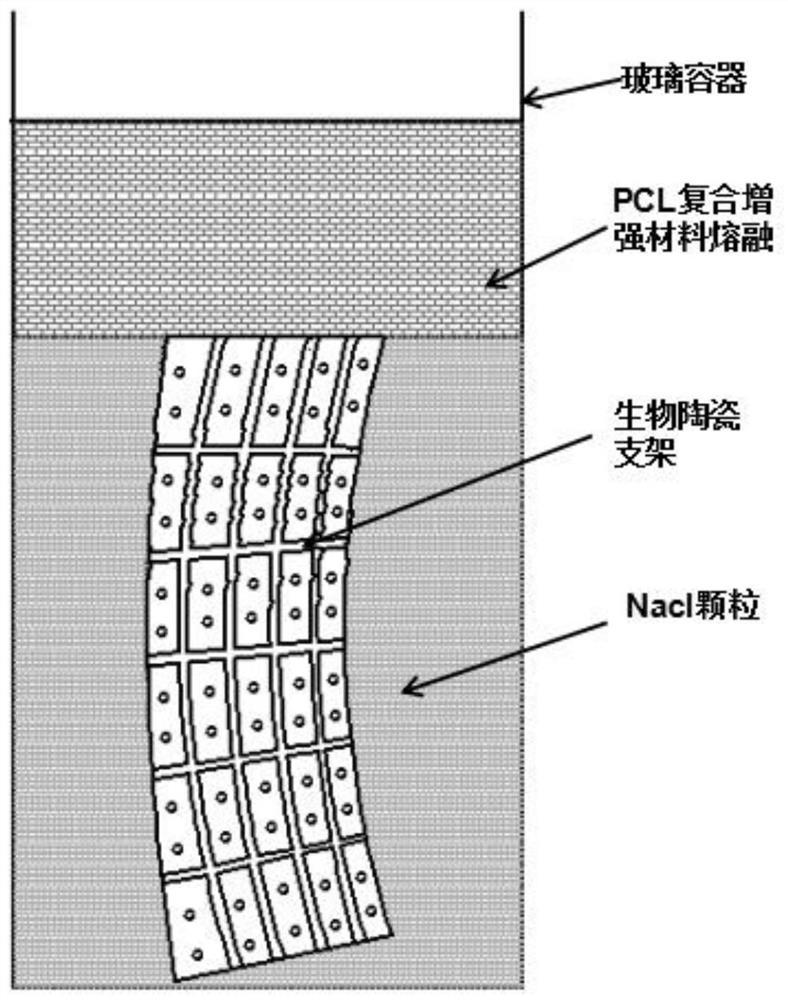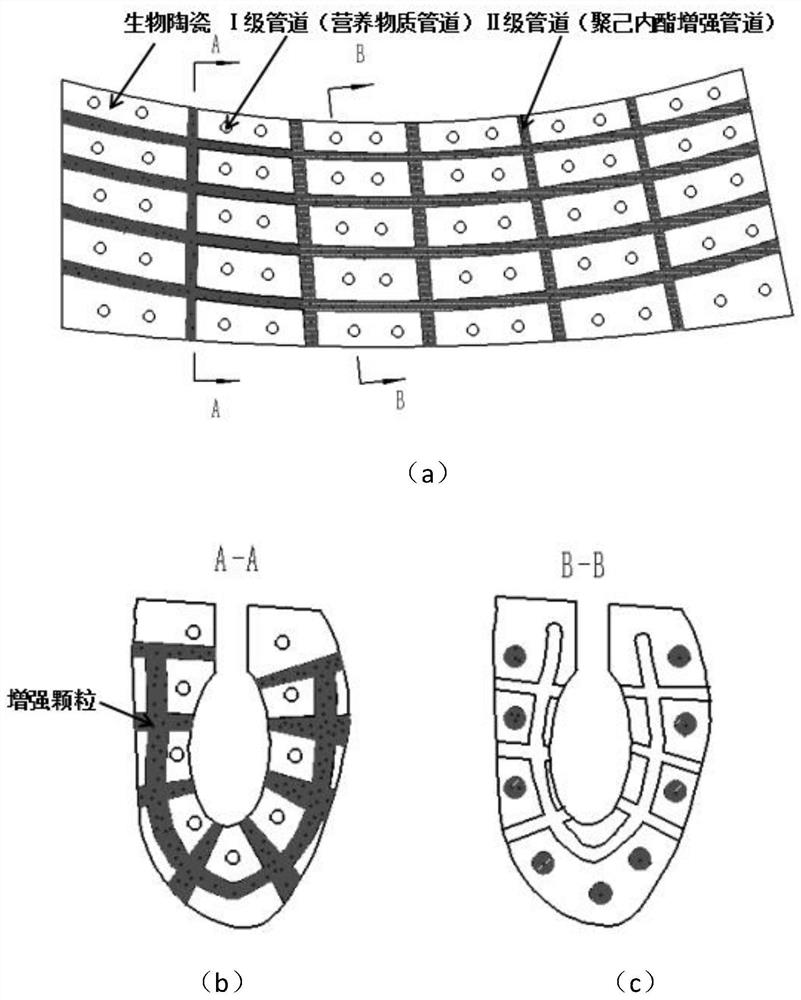A kind of preparation method of polycaprolactone/bioceramic composite bone implant
A technology of polycaprolactone and bioceramics, applied in tissue regeneration, medical science, prosthesis, etc., to achieve the effect of improving mechanical properties
- Summary
- Abstract
- Description
- Claims
- Application Information
AI Technical Summary
Problems solved by technology
Method used
Image
Examples
preparation example Construction
[0028] A method for preparing a polycaprolactone / bioceramic composite bone implant, comprising the following steps:
[0029] 1) Firstly, according to the CT or MRI multi-planar reconstruction of the diseased tissue of the clinical patient, a 3D model whose structure matches the macrostructure is constructed through the Mimics software, and then the 3D model is imported into the 3D design software (Solidworks, Proe / Engineer) to complete a two-level 3D model design of disconnected porous structure bioceramic scaffolds: only one end surface of the II-level pipeline is connected to the outside world; the diameter of the I-level pipeline is 300-1500 μm; the diameter of the II-level pipeline is 500-1800 μm; %, II pipe porosity 5-60%, such as figure 1 shown;
[0030] 2) The additive manufacturing method is used to prepare the bioceramic scaffold blank with two levels of interconnected porous structure in step 1), and after high-temperature sintering, a high-strength bioceramic scaff...
Embodiment 1
[0036] Taking the preparation of a gradient-degradable polycaprolactone / β-tricalcium phosphate composite implant as an example, a method for preparing a polycaprolactone / bioceramic composite bone implant comprises the following steps:
[0037] 1) Firstly, according to the CT or MRI multi-planar reconstruction of the diseased tissue of the clinical patient, a three-dimensional model with a structure matching the macrostructure is constructed in the Mimics software, and then the model is imported into the three-dimensional design software Proe / Engineer to complete the porous structure with two levels of interconnection. Three-dimensional model design of structural bioceramic stents: only one end surface of the II-level pipeline is connected to the outside world, the diameter of the I-level pipeline is 800 μm, the diameter of the II-level pipeline is 1000 μm, the porosity of the I-level pipeline is 35%, and the porosity of the II-level pipeline is 20%;
[0038] 2) Using ceramic ligh...
Embodiment 2
[0044] Taking the preparation of gradient degradable polycaprolactone / β-tricalcium phosphate-hydroxyapatite ceramic composite implant as an example, the steps are as follows:
[0045] 1) Firstly, according to the CT or MRI multi-planar reconstruction of the diseased tissue of the clinical patient, a 3D model whose structure matches the macrostructure is constructed in the Mimics software, and then the 3D model is imported into the 3D design software Proe / Engineer to complete the two-level interconnected Three-dimensional model design of porous structure bioceramic scaffolds: only one end of the Class II pipe is connected to the outside world, the diameter of the Class I pipe is 300 μm, the diameter of the Class II pipe is 500 μm, the porosity of the Class I pipe is 30%, and the porosity of the Class II pipe is 25% ;
[0046] 2) Using ceramic light-curing technology to prepare the β-tricalcium phosphate-hydroxyapatite ceramic scaffold blank with two levels of interconnected por...
PUM
| Property | Measurement | Unit |
|---|---|---|
| diameter | aaaaa | aaaaa |
| diameter | aaaaa | aaaaa |
| diameter | aaaaa | aaaaa |
Abstract
Description
Claims
Application Information
 Login to View More
Login to View More - R&D
- Intellectual Property
- Life Sciences
- Materials
- Tech Scout
- Unparalleled Data Quality
- Higher Quality Content
- 60% Fewer Hallucinations
Browse by: Latest US Patents, China's latest patents, Technical Efficacy Thesaurus, Application Domain, Technology Topic, Popular Technical Reports.
© 2025 PatSnap. All rights reserved.Legal|Privacy policy|Modern Slavery Act Transparency Statement|Sitemap|About US| Contact US: help@patsnap.com



